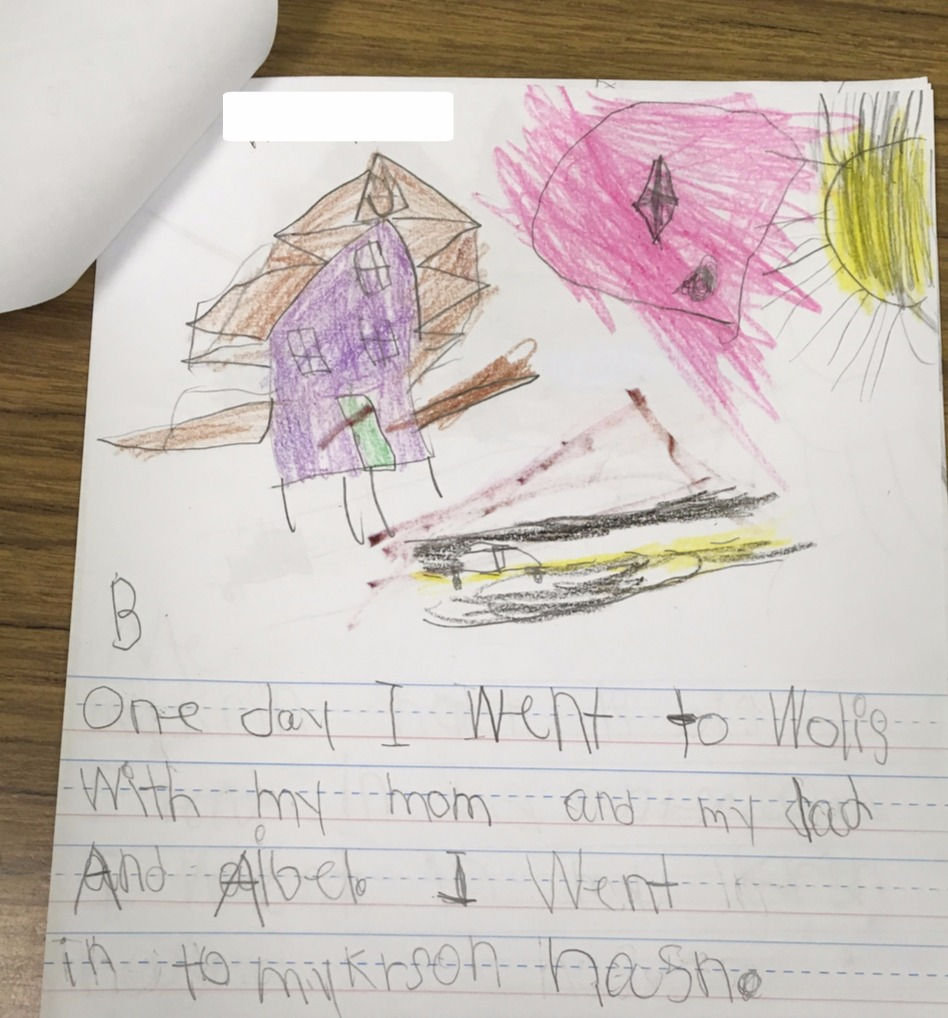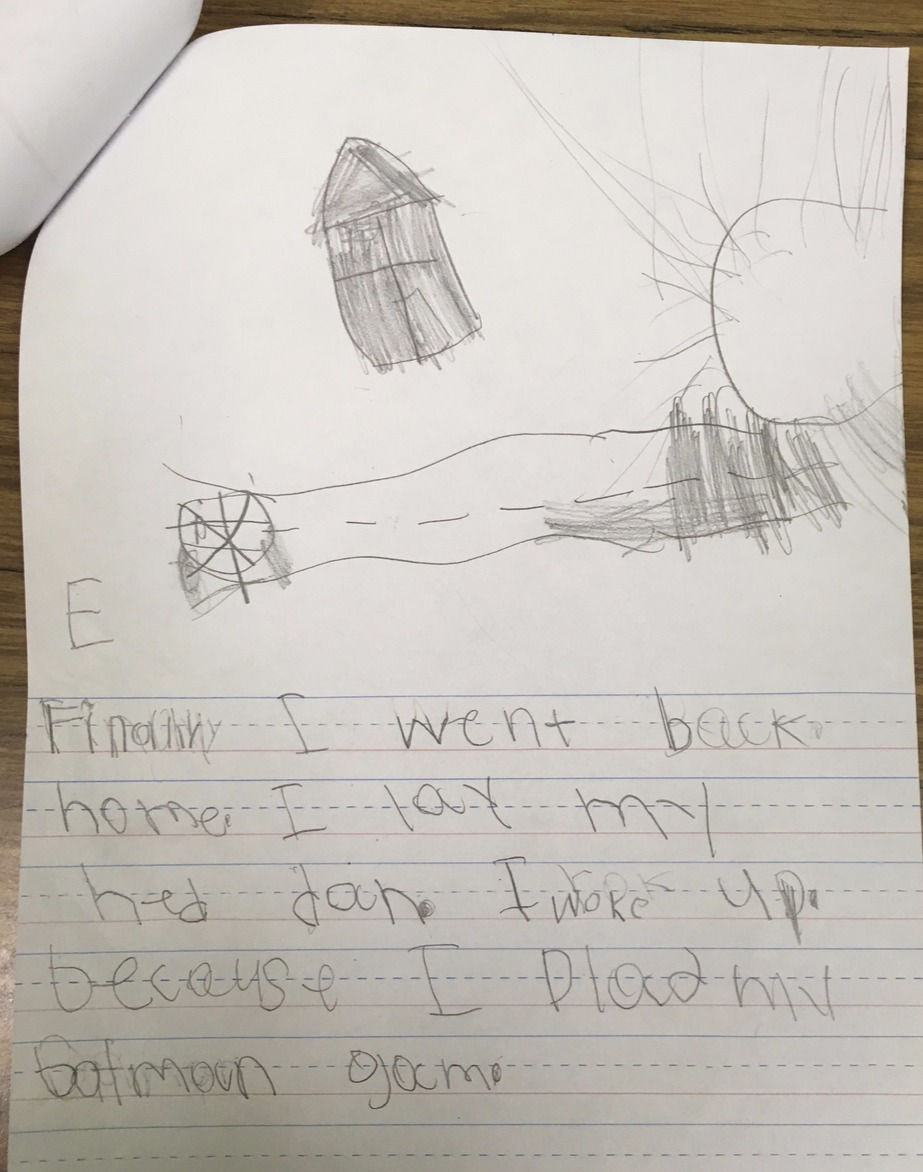HALEY BRITTINGHAM ⍚ PORTFOLIO
Qualitative ⍚ Writing
Writing Samples
All year long students worked on their writing craft by creating sequential stories full of details while also improving their spelling and grammar. Throughout the year, students worked on three major types of writing styles including narrative, opinion pieces, and explanatory. At the end of the year, they revisited narrative writing to utilize their writing skills they worked so hard on in the previous months. Below, for each student sample, I have provided the beginning of year (BOY) and end of year (EOY) writing sample for the first and fourth quarter narrative writing assessment. The range of writing showcases how each student, who were on different levels, showed growth as they progressed through the year. The first narrative piece was written in October of 2015 and the second narrative piece was written in June 2016.
For each writing piece, students were instructed to write a "real-life" story that includes all of the characters - the people who were around during the event, what happened, and how people felt. At the end of the year, I emphasized providing a clear beginning, middle, and end and using transition words. This followed more of an informal assessment format, I did not remind students to add specific elements to their writing so what is present is what they remembered from all of our writing lessons.
Student A
At the beginning of the school year, student A was already proficient at writing detailed stories. The main difference between the BOY piece and the EOY piece is the legibility and conventions of her writing. The EOY piece shows that she was using punctuation and spelling common sight words more frequently and correctly. On the BOY piece, most of her sentences were inside of one long sentence and she only had a total of two periods, but on the EOY piece she was much more consistent and included a total of ten periods. At the EOY, she was also providing more details and giving the readers a clear picture of what was happening. She also clearly made use of transition signals to offer readers a seamless flow through her story.
By the end of the year, she still had some improvements to make which included being more consistent with the use of capitalization and spelling certain sight words such as "were" and "there" correctly. However, overall, she made growth by providing a beginning, middle and end while also improving her punctuation, providing details for each part and describing how characters acted and felt.
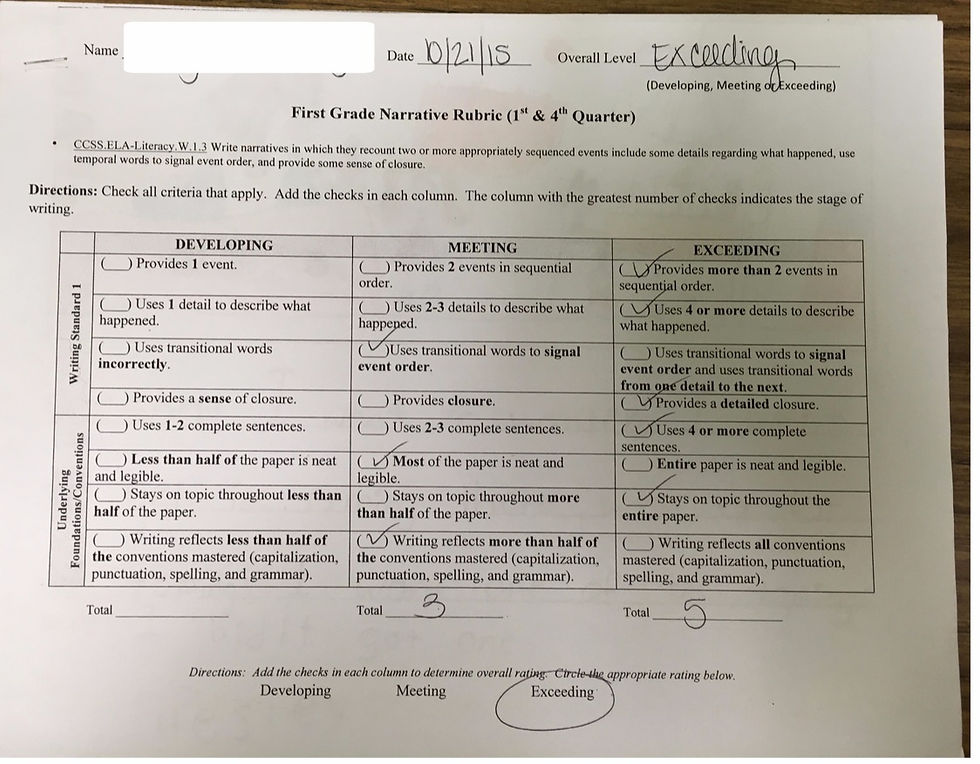
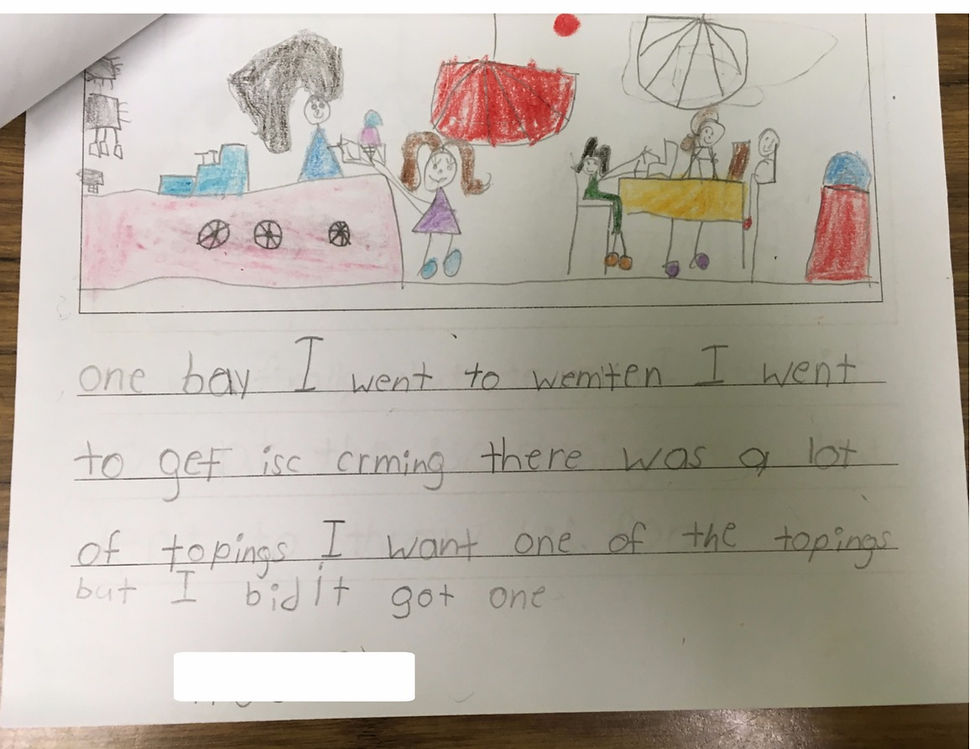


Narrative Piece 10/2015
Narrative Piece 06/2016
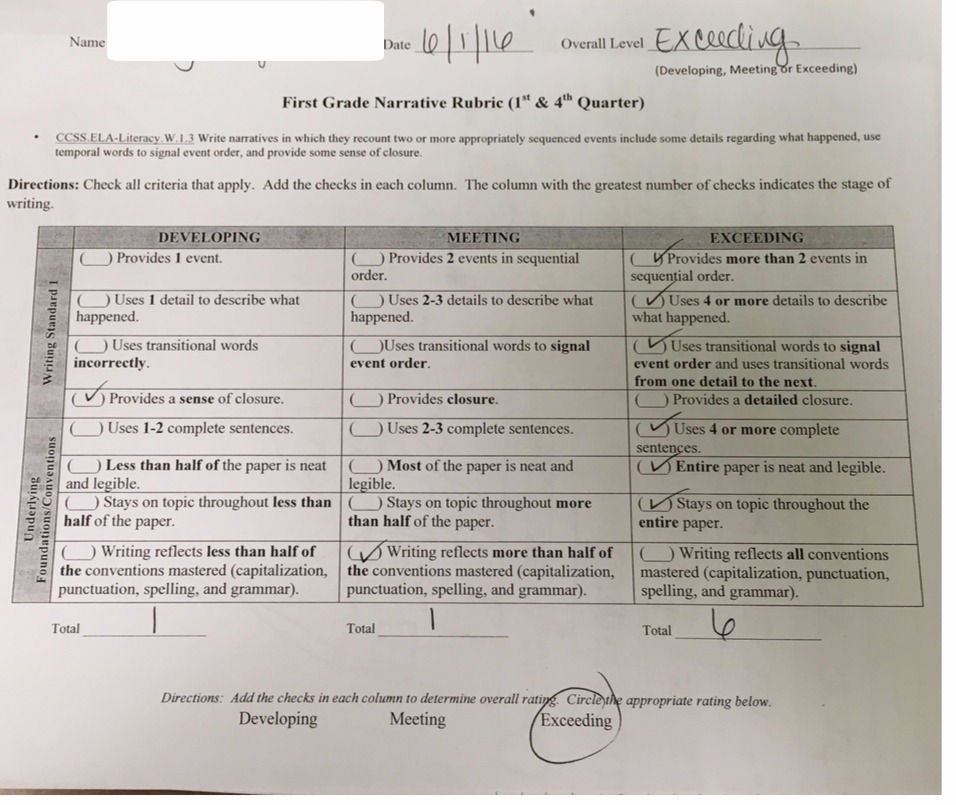
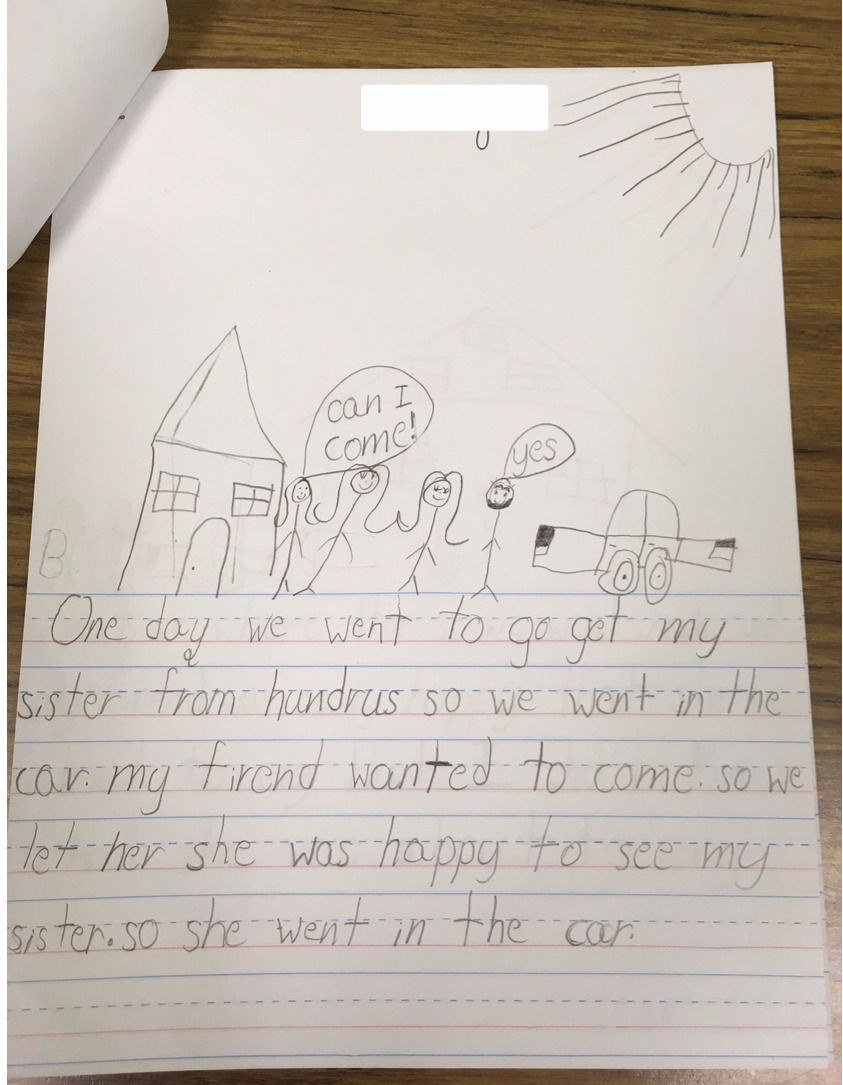
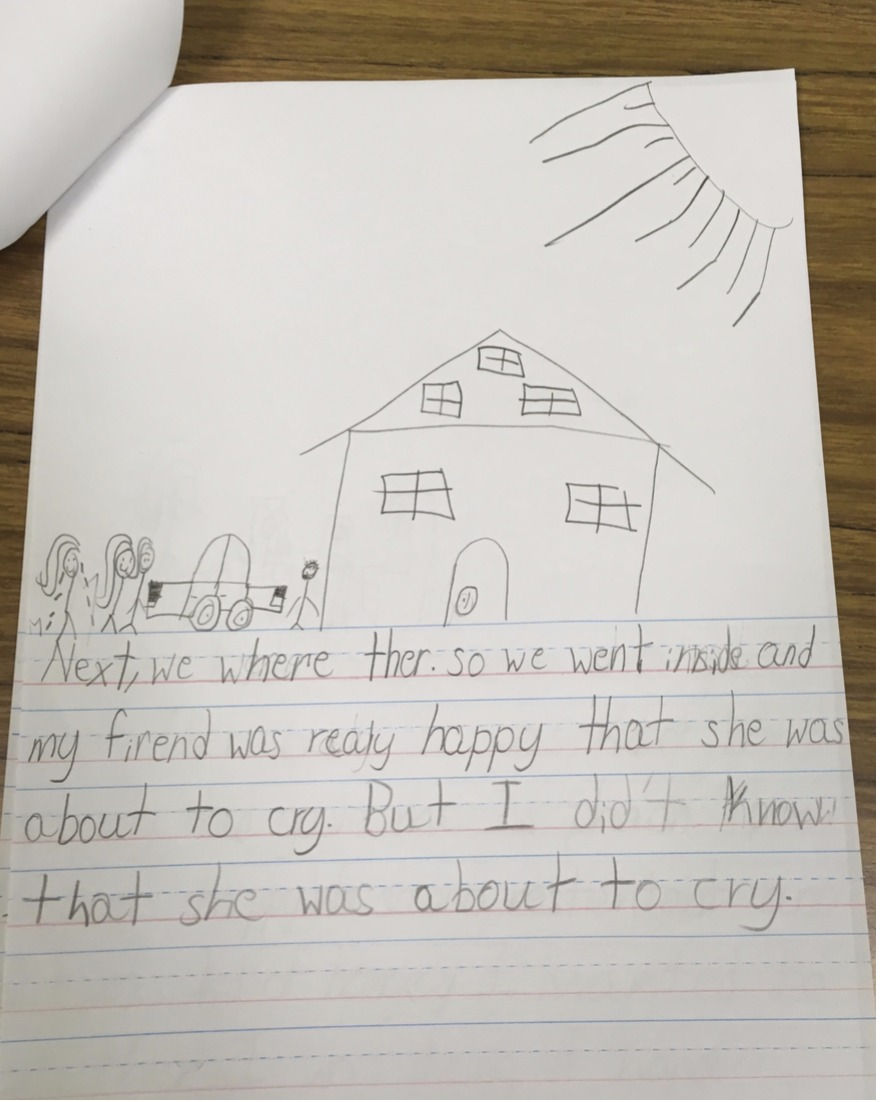
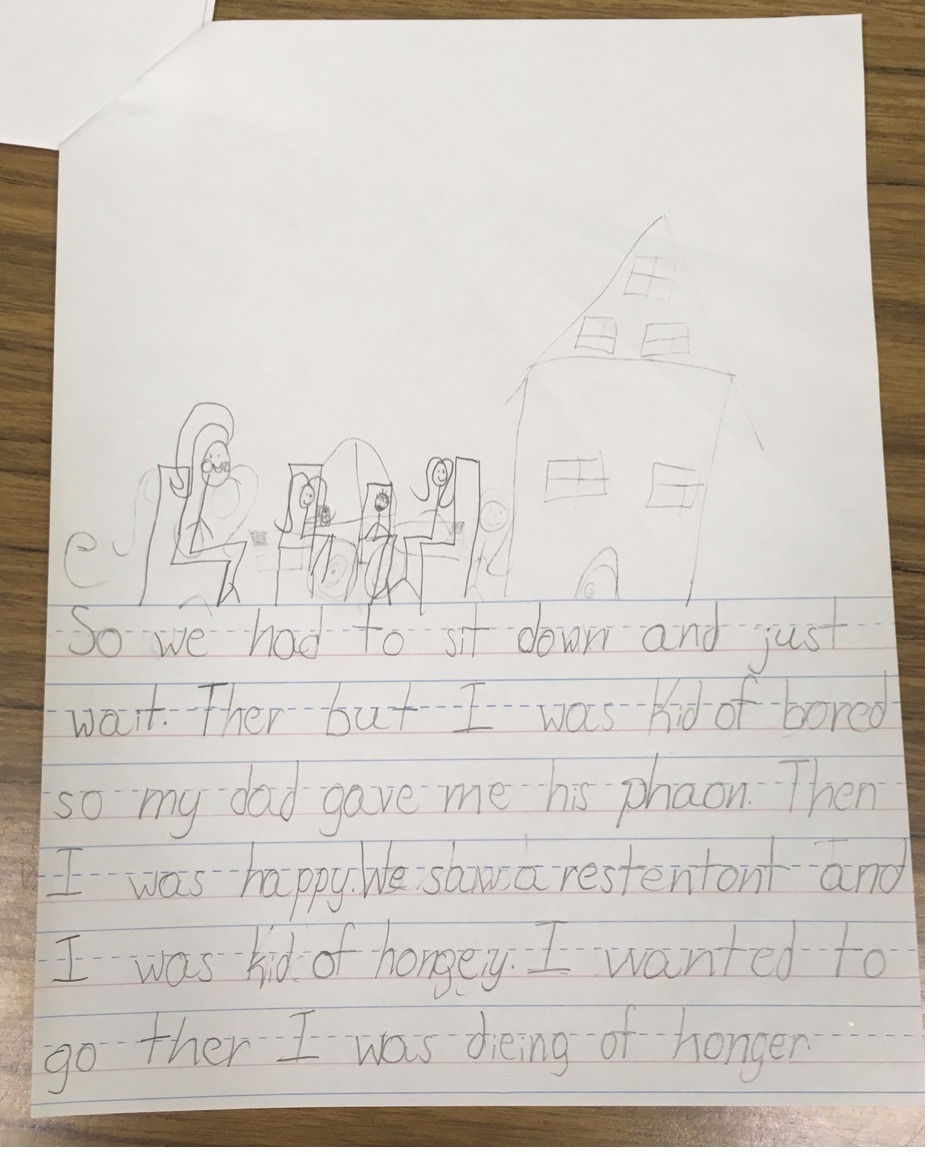
Student B
Student B was also showed strength in her writing skills in the BOY where she received an Exceeding score. On the end of year writing sample, she received a score of Meeting. Although it appears that she did not grow according to the scores, she actually did when her pieces are compared. On her EOY piece, she clearly provides a beginning, middle, and end which she indicates with her transitional words/phrases, "In the beginning" and "The next Friday" and "Then." She shows dramatic growth in her ability to story-tell by adding many details to provide a picture of what happened. Also, she includes quotations which show how her characters were speaking with each other. Some of the quotations along with commas were misplaced which resulted in her receiving a meeting score for conventions, yet she made growth by including these elements to her story as they were nonexistent in her beginning of year piece. She did not provide a detailed closure but did share how she felt, which was "We had fun!". I taught the students to wrap up their stories by providing information about the characters felt which is what she did although it was not detailed. Her grammar and use of words also dramatically improved which shows that she grew in her speaking and listening skills as well because I would teach them to go back and reread their sentences to see if they "sound right" and "make sense." Likewise, student B grew in her ability to use proper punctuation marks which in the BOY piece she had a total of seven run-on sentences, but on the EOY piece she was more concise and had a total of fourteen complete sentences.
Narrative Piece 10/2015
Narrative Piece 06/2016
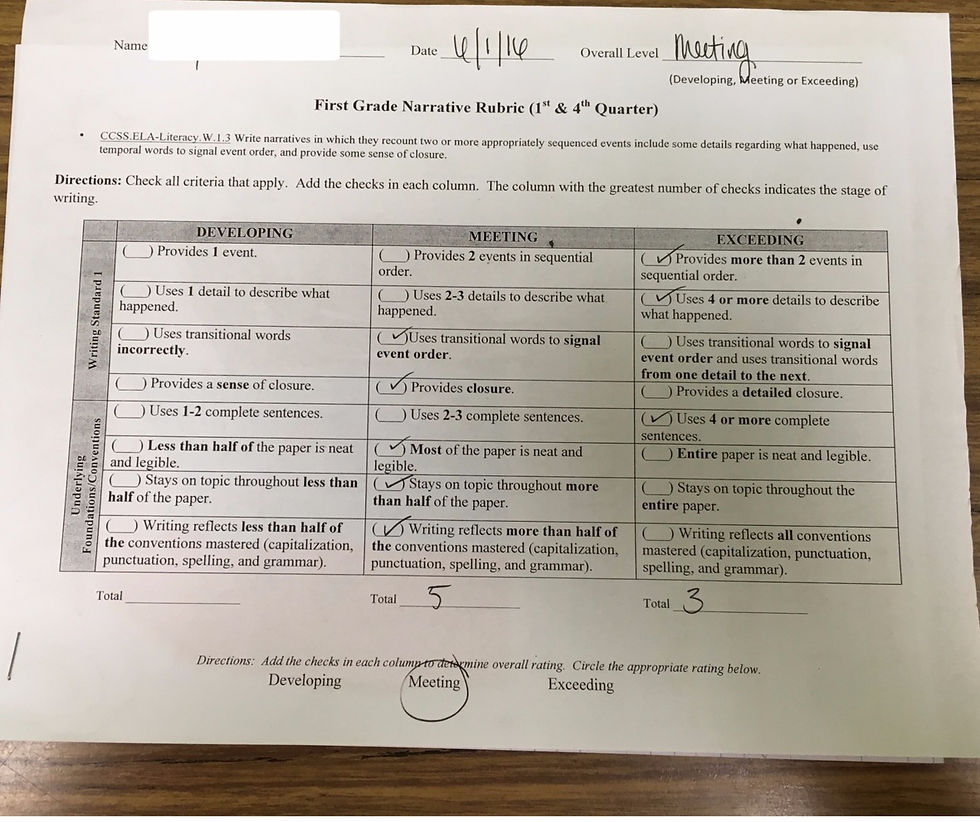
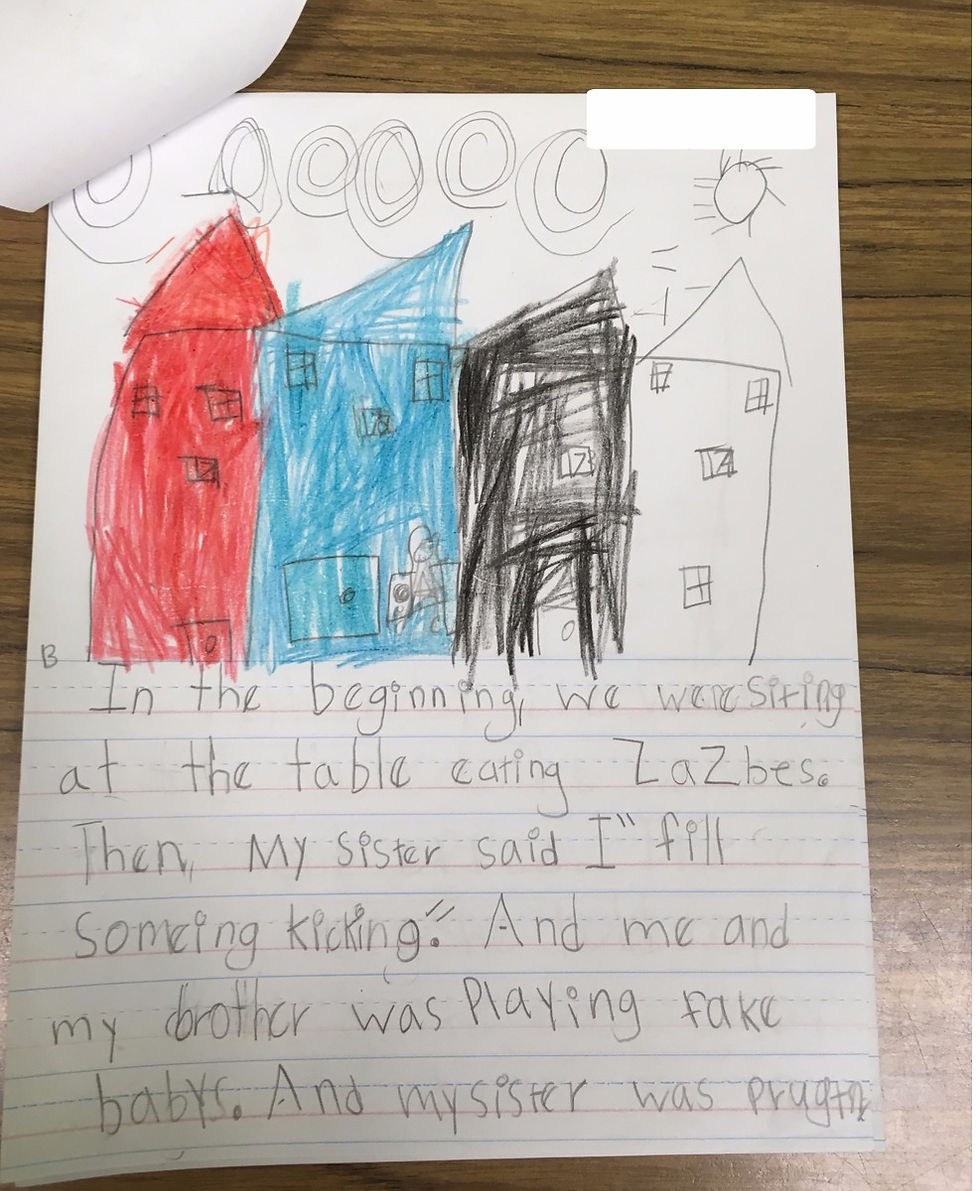
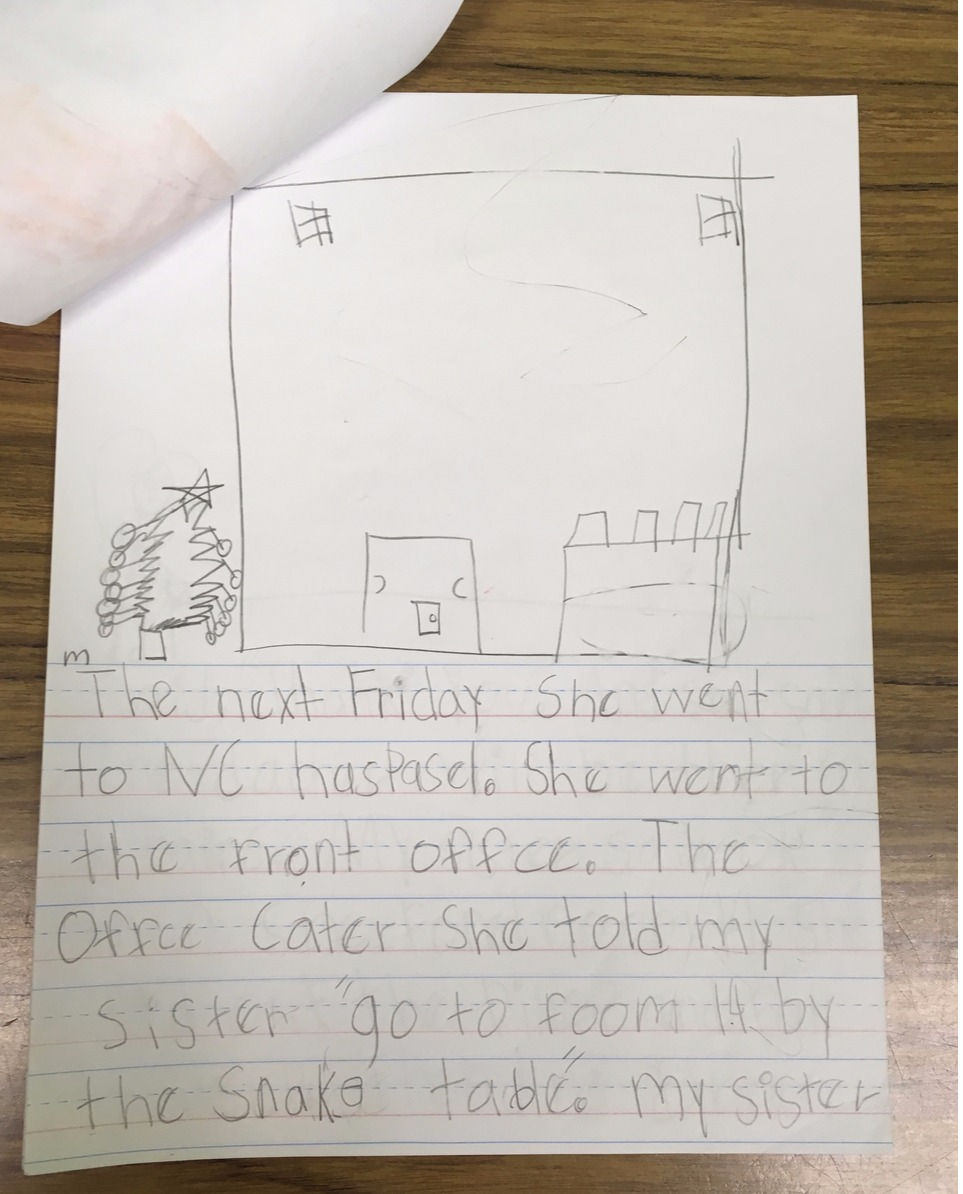




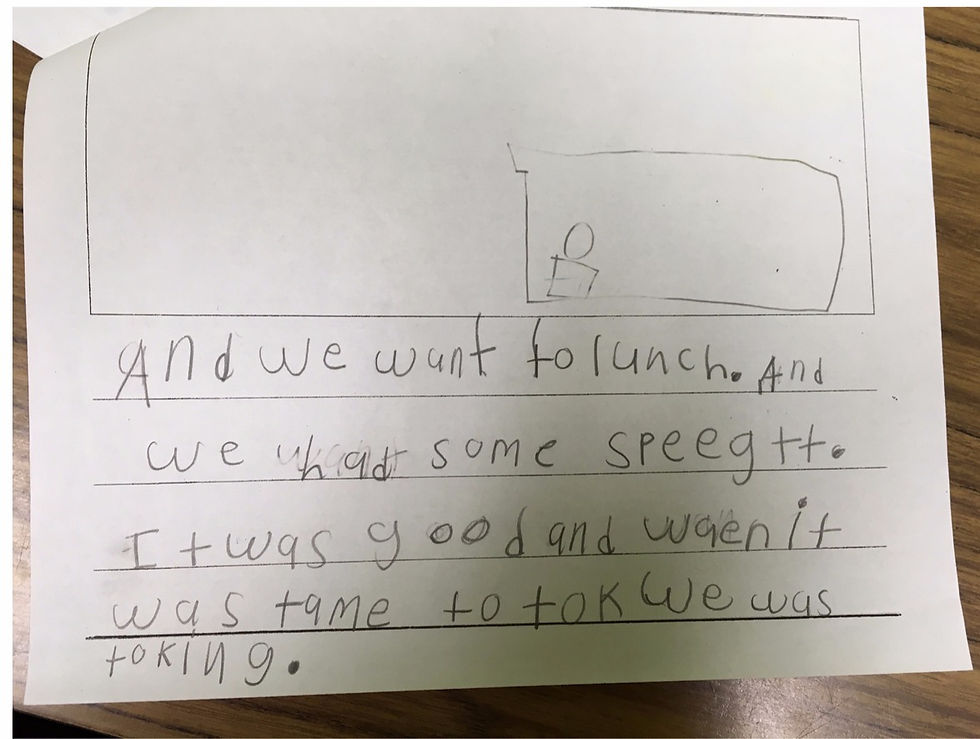
Student C
Student C showed a tremendous amount of growth in writing from the BOY to EOY. In the BOY, he only provided information about one event. He does include capitalization and punctuation marks, but his writing is tough to read, especially the second page of the first piece. By the EOY, his writing had dramatically improved. He provided a beginning, middle and end while also using transition words to signal to the reader that something else was about to happen. Also, there are details associated with multiple events in his story. Although some words were misspelled, his legibility and handwriting improved significantly. He had some areas to continue working on such as spelling and providing detailed closure. Overall he grew from developing to meeting and some scores in the exceeding section of the rubric.
Narrative Piece 10/2015
Narrative Piece 06/2016
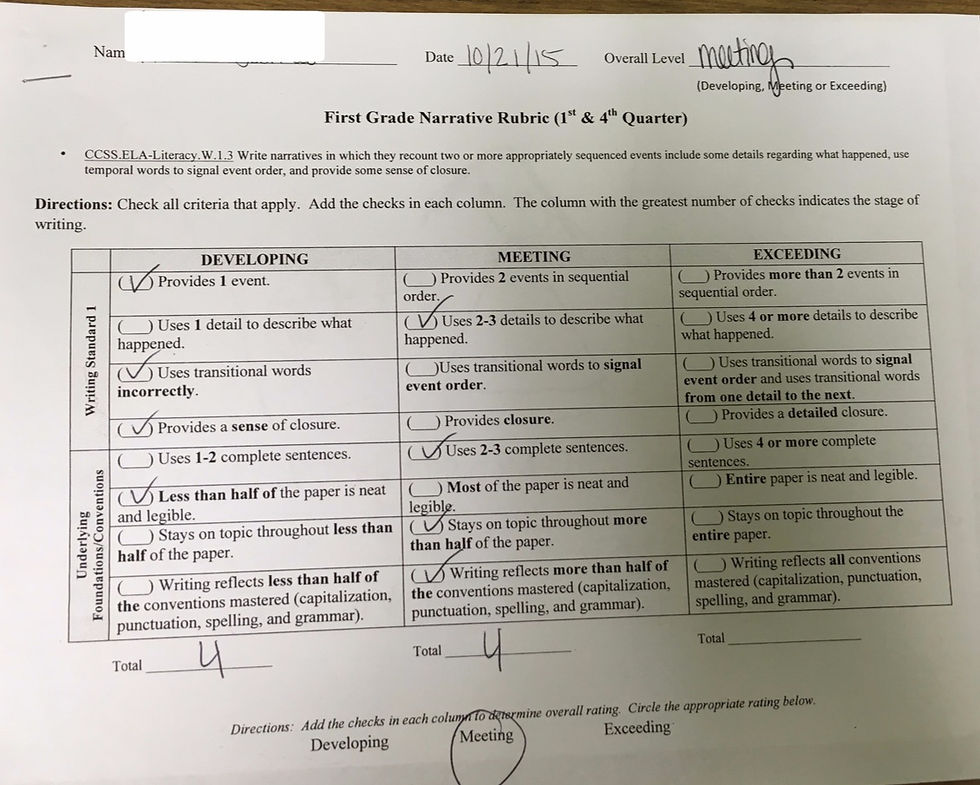


Reflection
All three of these students started off their first-grade year with different strengths and weaknesses in writing full stories. The first two students were strong in their ability to provide details about two or more events but lacked the consistency of using proper conventions such as grammar, punctuation, and spelling. By the EOY, both had grown in their ability to include these aspects to their writing. The last student showed dramatic growth in most of the areas on the rubric such as using transition words, providing details about multiple events, using complete sentences and improving legibility. In all three EOY samples, I noticed an increase in the use or the attempt to use transition words, the letters B, M, and E on their pages to help them as they write each part, and an increase in the proper syntax of their sentences. Although they each had different areas for growth at the end of the year, they all were able to write narrative pieces that made sense and comprised of the basics of writing a story.

